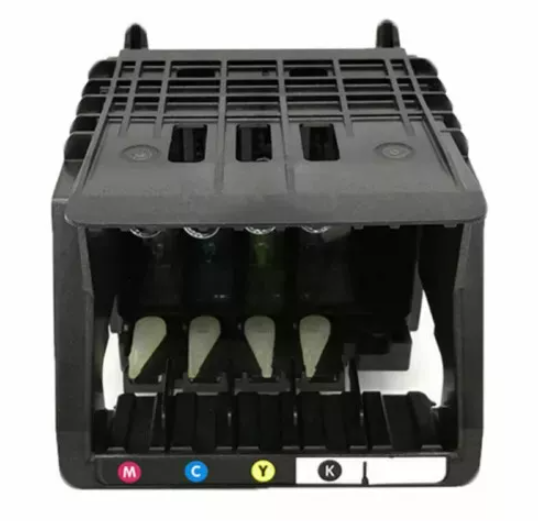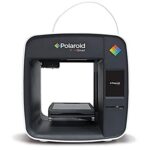One of the main parts of an inkjet printer is the printer head, which transfers ink onto paper with precision. Different printers use different technologies for this, like thermal inkjet print heads in Canon and HP printers which use heat to expel ink droplets, and piezoelectric print heads in Epson printers which use electrical charges. The aim of these technologies is to provide high-quality and accurate printing. Printer head and ink developers continuously work together to enhance performance, focusing on improving printing speed, accuracy, and reliability to produce clear and vivid images. Understanding how the printer head works and learning how to care for it will ensure that your printer continues to produce high-quality printouts.
How Inkjet Printers Work
Most printers use a technology called inkjet printing. This involves spraying tiny droplets of ink onto paper to create text and images. The part of the printer that does this is called the print head.
How does the print head work?
The print head is a small, complex device with many tiny nozzles. These nozzles are so small that you can barely see them with the naked eye. When the printer is working, the print head moves back and forth across the paper. As it moves, the nozzles spray ink onto the paper in a precise pattern.
There are two main types of print heads:
- Thermal print heads use heat to create tiny bubbles of ink that are then ejected onto the paper.
- Piezoelectric print heads use a special crystal that vibrates when an electric current is applied. This vibration creates pressure waves that push ink out of the nozzles.
Types of ink
Inkjet printers use a variety of inks, including dye-based inks and pigment-based inks. Dye-based inks are water-soluble and produce vibrant colors. Pigment-based inks are not water-soluble and are more resistant to fading.
What can go wrong with a print head?
Print heads can become clogged with dried ink, which can cause streaks or gaps in the printout. They can also become damaged, which can cause the printer to stop working altogether.
How to care for your print head
You can extend the life of your print head by using high-quality ink and paper. You should also clean the print head regularly using the printer’s built-in cleaning function. If the print head becomes clogged, you can try to clean it manually with a cotton swab and distilled water.
Should you replace or repair a print head?
Whether to replace or repair a print head depends on the severity of the problem and the cost of replacement. If the print head is only slightly clogged, you may be able to clean it yourself. However, if the print head is severely clogged or damaged, you may need to replace it.
Table 1: Print head comparison
| Feature | Thermal Print Head | Piezoelectric Print Head |
|---|---|---|
| How it works | Uses heat to create ink bubbles | Uses vibrations from crystals to push ink |
| Pros | Less expensive | More precise, longer lifespan |
| Cons | Shorter lifespan | More expensive |
Print head maintenance tips
Regular maintenance can help keep your print head in good condition and extend its life. Here are some tips:
- Clean the print head regularly using the printer’s built-in cleaning function or a cotton swab with distilled water.
- Use high-quality ink and paper to prevent clogs.
- Store the printer in a cool, dry place.
- Avoid touching the nozzles on the print head.
- Print a test page regularly to check the quality of the printout.
Key Takeaways
- Printheads transfer ink to paper accurately.
- Thermal and piezoelectric technologies achieve this differently.
- Ongoing improvements enhance print quality and performance.
Fundamentals of Inkjet Printing Technology
Inkjet printing technology has transformed the way images and text are applied to various surfaces. Key aspects include the development of print heads, their internal structure, and the different types of inkjet technologies.
The Evolution and Engineering of Inkjet Print Heads
Inkjet print heads have evolved significantly since their inception. Early versions were bulky and less efficient. Modern print heads are precise and use advanced technology. The core principle remains: ejecting tiny droplets of ink onto a substrate.
Two primary technologies have driven this evolution: thermal and piezoelectric. Thermal printheads use heat. This heat creates a bubble that forces ink through nozzles. Piezoelectric printheads use electric charges to flex a crystal, pushing ink out.
These advancements have led to faster printing speeds and higher resolution. Many industries, from office printing to industrial manufacturing, rely on these technologies.
Anatomy of an Inkjet Print Head
An inkjet print head is a complex device, yet its basic structure is easy to understand. The main components include the nozzle plate, ink channels, and the electronic circuitry.
The nozzle plate has tiny holes through which ink is ejected. Ink channels supply ink directly to each nozzle. The electronic circuitry controls the timing and amount of ink released.
Some print heads are designed for binary printing, where each nozzle can only be open or closed. Others are for greyscale printing, where variable droplet sizes create different shades. This precise control is essential for high-quality prints.
Types of Inkjet Technologies: Continuous vs. Drop-on-Demand
Inkjet printing can be divided into two main types: Continuous Inkjet (CIJ) and Drop-on-Demand (DoD). Each type has its unique applications and benefits.
Continuous Inkjet technology constantly ejects a stream of ink droplets. Only some are used for printing, while the rest are recirculated. This method is fast, making it ideal for high-speed industrial printing.
Drop-on-Demand technology ejects ink only when needed. There are two main types: thermal and piezoelectric. As previously discussed, thermal uses heat, while piezoelectric uses electrical charges.
Drop-on-Demand is more efficient in ink usage. It also allows for finer control, crucial for high-resolution images and text. Both technologies continue to innovate, pushing the limits of what inkjet printing can achieve.
Optimizing Print Quality and Performance
To optimize print quality and performance, attention to ink and media interaction, careful maintenance of print heads, and leveraging advancements in print head design is crucial. Each of these factors plays a key role in achieving the best possible prints.
Ink and Media Interaction
The type of ink and paper affects print quality significantly. Inkjet printers from brands like HP and Canon often use specialty inks designed to interact effectively with specific types of paper.
For example, latex inks work well on posters, while pigment inks are better for high-quality image prints. Viscosity and surface tension are critical factors in ensuring proper adhesion and drying. Using the right ink for the paper type yields better texture and color fidelity.
Maintenance and Longevity of Print Heads
Ensuring the longevity of print heads requires regular maintenance. Frequent cleaning prevents nozzle blockages, which can degrade print quality. Most printers, including those from Epson and Ricoh, offer self-cleaning options.
Manually cleaning with a lint-free cloth and isopropyl alcohol can also help. By keeping the nozzle holes clean, the printer can produce consistent ink droplets, maintaining precision and high DPI. Regular checks and maintenance ensure the print heads last longer and work efficiently.
Advancements in Print Head Design and Functionality
Modern print heads have advanced significantly. Some desktop inkjets and large-format printers feature precision silicon wafer manufacturing to create fine nozzle holes for controlled ink flow.
HP’s thermal inkjet technology and Canon’s Bubble Jet system are examples where small voltage pulses are used to eject tiny ink drops. Newer designs focus on reducing wear and tear and enhancing durability, resulting in better print quality and more reliable performance.
Xerox, Kodak, and other companies continue to innovate in print head designs, making them more efficient and cost-effective. These advancements directly translate to better color reproduction, sharper text, and improved overall print quality.
Frequently Asked Questions
Printheads are crucial for printing text, images, and graphics. Readers often have questions about their role, working principles, and common issues.
What is the role of a printhead in an inkjet printer?
In an inkjet printer, the printhead controls the precise ejection of ink droplets. This precision helps form text and images on paper. Each droplet must be accurate to ensure high-quality prints.
Can you explain the working principle of piezoelectric printheads?
Piezoelectric printheads use crystals that change shape when an electric current passes through them. This change creates pressure, which forces ink out through the nozzles. This method allows for precise control of ink placement.
How do printer nozzles facilitate ink delivery onto paper?
Printer nozzles are small openings through which ink droplets pass. They guide the ink onto the paper in controlled patterns. This ensures accurate and consistent image and text formation.
What are common causes of printhead failure in printers?
Printhead failure can occur due to clogging, overheating, or electrical issues. Dry ink can block the nozzles, while excess heat can damage the components. Proper maintenance can help prevent these problems.
What is involved in the process of cleaning a printer head?
Cleaning a printhead often involves a built-in cleaning cycle. For manual cleaning, remove the printhead and gently wipe it with a lint-free cloth dampened with isopropyl alcohol. This removes dried ink and debris that can block the nozzles.
What steps are involved in repairing a malfunctioning printer head?
To repair a printhead, you might need to clean it first. If cleaning does not work, you might need to replace it. Consult the printer’s manual for specific instructions or contact the manufacturer for support.







